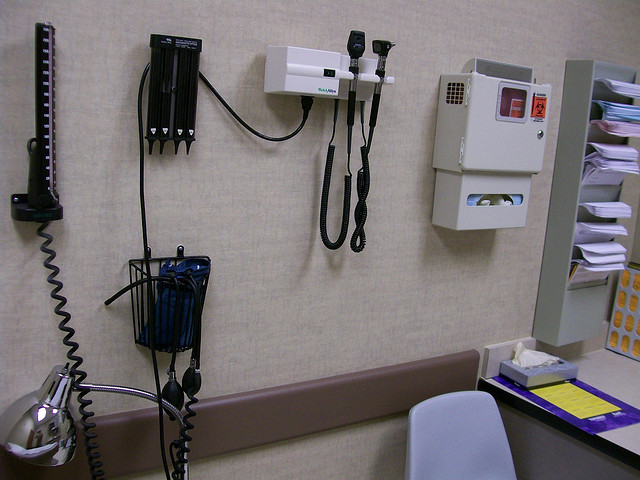If the unknown generates anxiety, then a trip to the hearing specialist is especially nerve-racking. While nearly all of us have experience with the family doctor and the community dentist, the visit to the hearing specialist might be a first.
It sure would be useful to have someone make clear the process up front, wouldn’t it? Well, keep reading, because as you’ll see, the process of getting your hearing tested is generally straight forward, comfortable, and pain-free — with aspects that can actually be fun.
So here’s how it will go:
Just after you arrive at the office, you will check in with a staff member at the front desk who will hand you some forms to complete. Soon after completing the forms, a hearing specialist will come with you into a room to start the hearing examination, which is made up of four parts:
Part 1: Case History

The hearing specialist begins the process by getting to know you, your medical history, and your hearing loss symptoms. Preparing for this step is critical, because this is where you get to convey to the hearing specialist the particulars of your hearing loss, what you are expecting from treatment, and your personalized hearing needs.
This portion is all about you: what do you want to accomplish with enhanced hearing? Do you desire to play a music instrument again? Do you want to be more active in work meetings? Do you want to be more lively at social gatherings? The more you can describe to your hearing specialist the better.
Next comes the testing.
Part 2: Otoscopy
The initial diagnostic test to be performed is called an otoscopy. An otoscope is used to visually assess the ear canal and eardrum to find out if your hearing loss is connected with infections, earwax buildup, or blockages. If the reason behind your hearing loss is something as quick and easy as earwax buildup, you could potentially start hearing better within minutes simply from professional earwax removal.
Part 3: Tympanometry
The following test is referred to as tympanometry, used to test the eardrum and middle ear. A gadget is inserted into the ear that will adjust the air pressure, measuring how your ear responds to different pressures.
To fully grasp this test, you have to first understand that hearing loss is categorized into one of two general groups:
- Sensorineural hearing loss — this is the most regularly occurring hearing loss. It is also identified as noise-induced hearing loss and it involves destruction of the nerve cells of hearing.
- Conductive hearing loss — this hearing loss results from clogging or obstructions that limit sound transmission before the sound arrives at the nerves of hearing.
Tympanometry is a test that can help to rule out conductive hearing loss, to make sure that there are no obstructions, infections, or middle-ear-bone conditions. Conversely, Audiometry, which is tackled next, will measure sensorineural hearing loss.
Part 4: Audiometry
The concluding group of tests will be completed in a soundproof room. These tests are jointly referred to as audiometry and will evaluate your hearing range and sensitivity. Audiometry is the best means to quantify sensorineural hearing loss.
With the use of an audiometer, the hearing specialist will be prepared to determine:
- Which frequencies you can hear well and which you have trouble with.
- The minimal decibel levels, at different frequencies, at which you perceive sound.
- The precise calculations correlated with your hearing loss (as recorded on an audiogram).
- Your capacity to grasp speech, with or without background noise.
The test itself, from your standpoint, will be comfortable and fairly simple. You will be presented with sounds and speech through earphones and will be directed to identify when you can hear the sounds by pushing a control or lifting your hand.
Reviewing results and planning treatment
After the testing is complete, your hearing specialist will talk about your results with you. If your hearing loss necessitates medical or surgical treatment (due to infections or middle-ear-bone problems, for example), your hearing specialist can make the appropriate referral.
If your hearing loss can benefit from assistive listening devices or hearing aids, your hearing specialist will collaborate with you to choose the best solution for you, your budget, your lifestyle, and your aesthetic considerations.
Pretty simple for a lifetime of better hearing, isn’t it?
